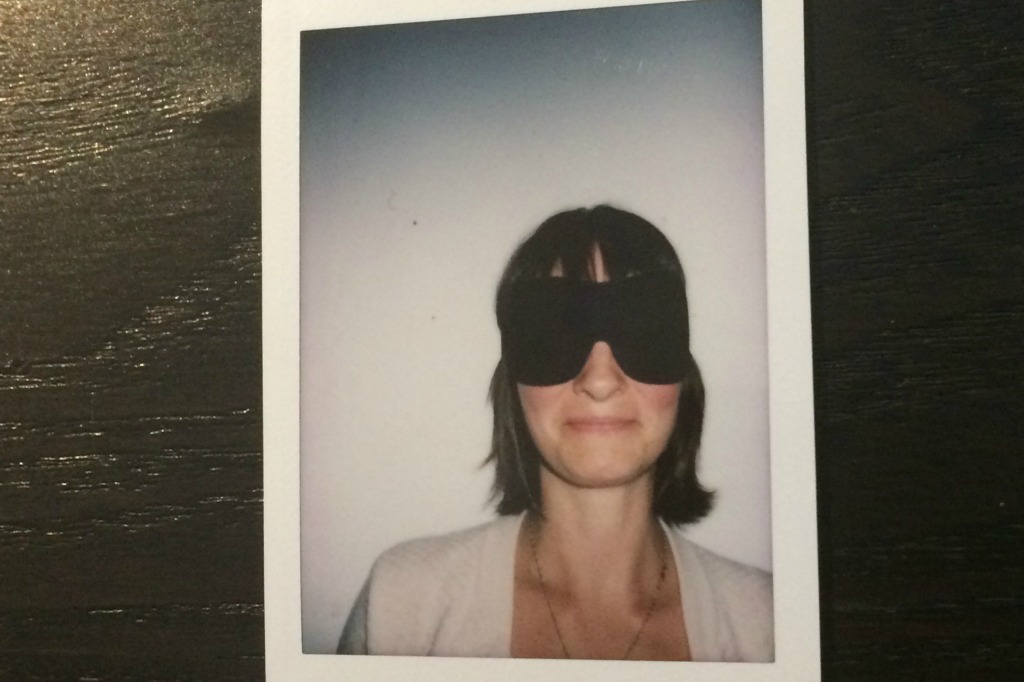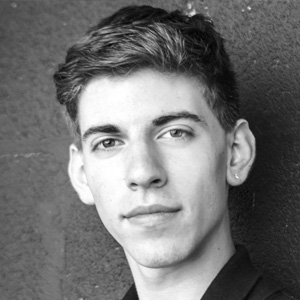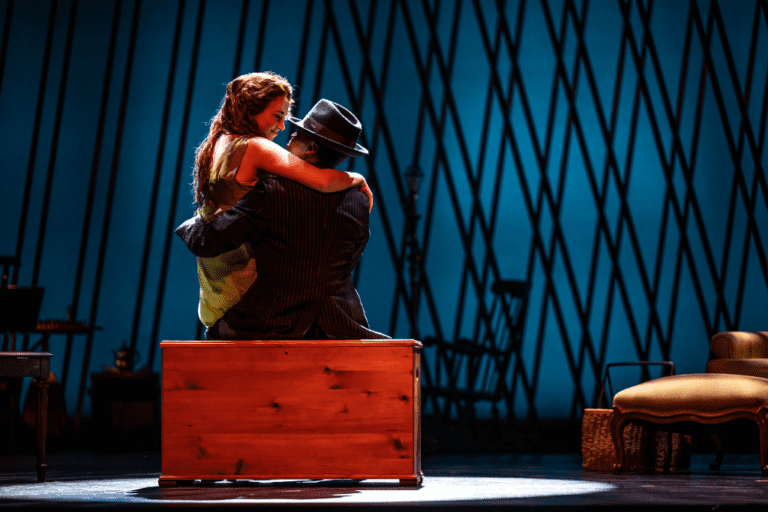How Do We Document Non-Traditional Theatre?
“A lot of contemporary plays cannot be experienced unless you’ve seen them and many of those performances are hard to transcribe on paper, because of their visual and physical nature. Of course, it’s always possible to make a video recording, but watching that is a diminished experience.”
– All Work and No Plays by Ontroerend Goed
Most published plays, at least well-written ones, are effective tools for theatre-makers. Readers have the capacity to imagine what a play can look like by parsing together the dialogue, stage directions, and occasional production image. As a director, I can study texts to learn about narrative, playwriting, and my own craft, or I can use them to jump into a room with a team of actors and turn them into productions.
As we move into a world where more and more non-traditional and immersive theatre is being created, it’s important to ask: how are the creators of these stories documenting them so that other artists can benefit?
Last year, I came across the anthology All Work and No Plays by the Belgian theatre collective Ontroerend Goed, which reshaped my concept of documenting contemporary performance on the page. The book contained many plays, one of them being The Smile Off Your Face. It’s a performance for one audience member at a time, where the individual is placed in a wheelchair, blindfolded, their hands tied, surrendering their trust to the performers. The narrative is driven by the senses: touch, taste, sound, smell, and sight (I like to think of it as kinesthetic storytelling), and the audience is confronted with their own expectations and challenges with physical intimacy.
I’m presenting The Smile Off Your Face at SummerWorks this year. It’s one in a series of shows that feature immersive audience participation, where individuals aren’t just spectators but are moving parts of the performance.
The script I’m working from is essentially a blueprint and is broken up into ten events for the audience member, or “visitor.” On the left side of each page, the experience of the visitor is described, and on the right side, the performance is described from the point of view of the actors. At the top of each encounter, a time stamp is placed to give an estimate of when and where a visitor should be during the show. Sometimes there is a footnote that provides further explanation about timing, clarity, or intention, like “by the time this is finished, a new visitor should be waiting for the same thing to happen.”

This is just how Smile is documented; Ontroerend Goed has a unique (and surprisingly aesthetically pleasing) way of documenting the eight other shows in their anthology. And there are a myriad of other ways contemporary performance can be recorded, too, though this is not an easy task.
A few years ago, playwright Jordan Tannahill published a Facebook note called “Looking Beyond the Page: An Anti-Canon of Essential Canadian Theatre and Performance” in response to the traditional canon of plays we currently draw from in Canada. He wrote:
It is perhaps only natural that the plays that exist most effectively and wholly as published texts are the ones that find their way most often into textbooks, university reading lists, lectures, and ‘Best Canadian Play’ lists. This past week I decided to sit down and consider which works of Canadian theatre and performance have been neglected or overlooked from the canon, based on (among other things no doubt) the difficulty of conveying their totality on the page.
Jordan brings up performances from groups like STO Union, Boca Del Lupo, 2b Theatre, and even performance artists Jess Dobkin and Rebecca Belmore. STO Union’s recently produced What Happened to the Seeker? involves audience as active participants in the performance: they walk through an art installation, interacting with objects, and purchase popcorn and watch a puppet film. In Rebecca Bellmore’s Vigil, audiences witness her wash a sidewalk, bite off heads of flowers, and tear away a red dress from a telephone pole.
Not only are these performances different every time you see them, but their differences are built into the individual experience as a fundamental feature—and there’s no way to document that. Archival video footage may give other theatre-makers a sense of the work, but does it allow them to use it as a tool—one to return to and study, challenge, revise, and adapt?
The issue of documentation exists in other disciplines, too. Dancers have a long practice of documenting work outside of a script. Choreographers like Deborah Hay and Peggy Baker hold workshops where they teach artists their repertoire or “give” their solos to people so they can be passed along to other generations. The company DopoLavoro Teatrale (DLT), which is presenting this year’s SummerWorks show The Invisible City—an interactive, 24-hour experience divided into two episodes, one from your own home and then one in a parallel universe—share their productions with other companies in a similar fashion.
“We [wouldn’t be able to] give another company a script because a proper script for our shows does not exist,” says DLT’s producer Rory de Brouwer. “However, we have frequently collaborated with theatre companies around the world … where one of our core members travels and builds the show with our new collaborators. Once the show is built, it can run on its own without our company physically present.”
Ontroerend Goed also has a history of flying some of their company members out to other parts of the world to teach them their shows, but we didn’t bring them in to help us rehearse The Smile Off Your Face. The show contains material specific to the time and place it was made—Belgium, in 2004—not to mention a few obscure cultural references that wouldn’t be appropriate for a Toronto audience, and part of my curiosity as director was how to create my own version for an audience here. So, with their permission, we took the blueprint and ran with it, playing around with the references and building our production into something unique.
We were able to take liberties without being daunted by the task of replicating the original version, something that may not have been possible if Ontroerend Goed had come to work with us. The process led me to wonder about the future of documenting contemporary performance. Will we one day see more opportunities to direct a version of another company’s non-traditional, contemporary performance the same way hundreds of directors pick up traditional scripts like Arthur Miller’s The Crucible or Shakespeare’s Julius Caesar and create their own unique vision, be it an adaptation or a faithful production?

A page from the script of The Smile Off Your Face
If playwrights, directors, and actors are accustomed to having a foundation of plays to work from to build their craft, this should also exist for contemporary performance. We should be thinking about how the shifting paradigm away from traditional plays needs to be recorded beyond video archives, which are often times publically inaccessible, and beyond flying in company members from out of town or overseas, which is potentially out of financial reach.
When I approached University of Toronto Mississauga English professor Holger Syme about this, he said: “I would argue that a script doesn’t document very much at all about performance, so I don’t think this is true only of contemporary shows.”
He has a point. Scripts can only access the spirit of a production. But when I’m reading traditional plays, whether or not I understand how the original performance proceeded, I can use my imagination to glimpse sparks of what might have been or could be. Documenting performance seems to be strung up in accessing its liveness. It seems like the practice of original creators teaching their work to another company is one of the only effective processes widely practiced.
Adrienne Wong and Dustin Harvey, the creators of the SummerWorks show Landline—a performance for two strangers in different cities to connect via SMS—have documented it in six different ways: archival video, a mini-documentary, photographs, written accounts, screen captures of text messages typed by audiences in show, and a script published by Canadian Theatre Review.
The Landline script includes all of the text spoken in the show, but it was impossible to document the individual audience experience. Wong acknowledges that while technically anyone could read the script and independently produce the work, it would be hard for someone else to capture the show’s essence without the original team.
Part of my process with Smile involved talking through the script’s intention and process: How does this action happen? What is this piece of dialogue supposed to evoke? Does it need to be this scent? What if it felt this way instead? But for all the questions the cast and I asked, we still needed a relationship with the original company. We had just as many questions for them that weren’t answered in the blueprint, usually big logistical ones like for how long could the actors perform the show?
So perhaps documenting the process as well as the product should be part of this discussion. The origins of a performance may be just as important in order for a new team to mount a production.
Ultimately, contemporary performance is built by a number of moving parts. And, unlike a linear script with dialogue, its core lies in how the audience and actors interact with each other and the space. The Smile Off Your Face lives in this world.
Documenting shows like this involves a combination of how we get there (process), what the actors are doing (performance), and how the audience experiences the work (reception). Maybe it’s not up to just the creators to document these kind of shows, but up to the audience as well.
The Smile Off Your Face is on now as part of the SummerWorks Performance Festival. For tickets or more information, click here
For more about Landline, click here, and about The Invisible City, click here









Comments